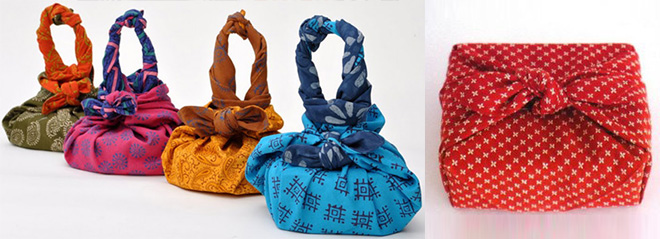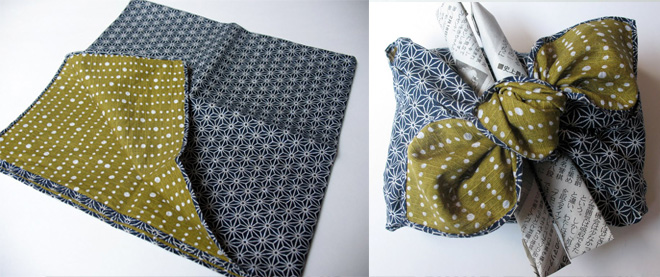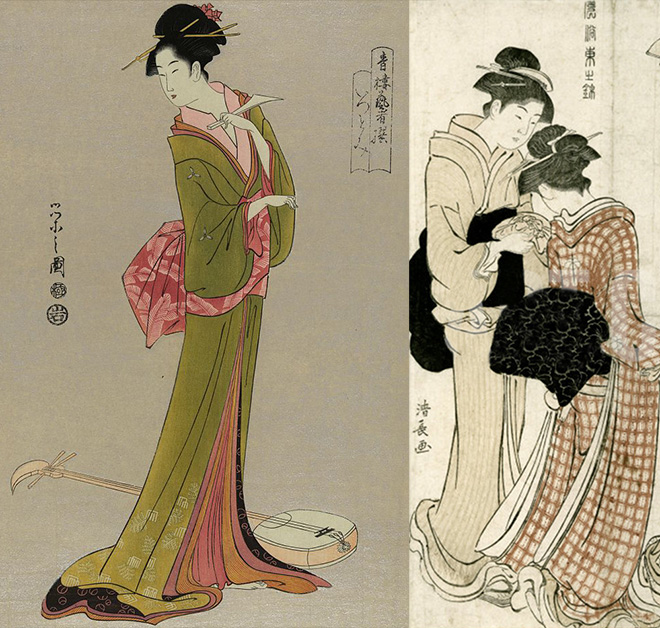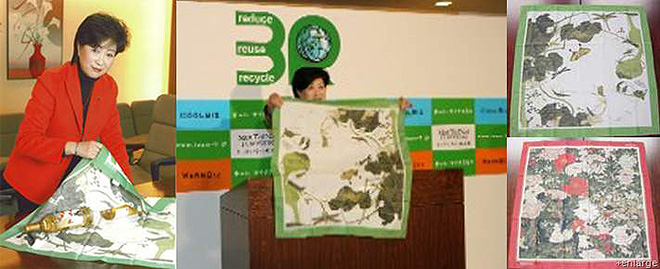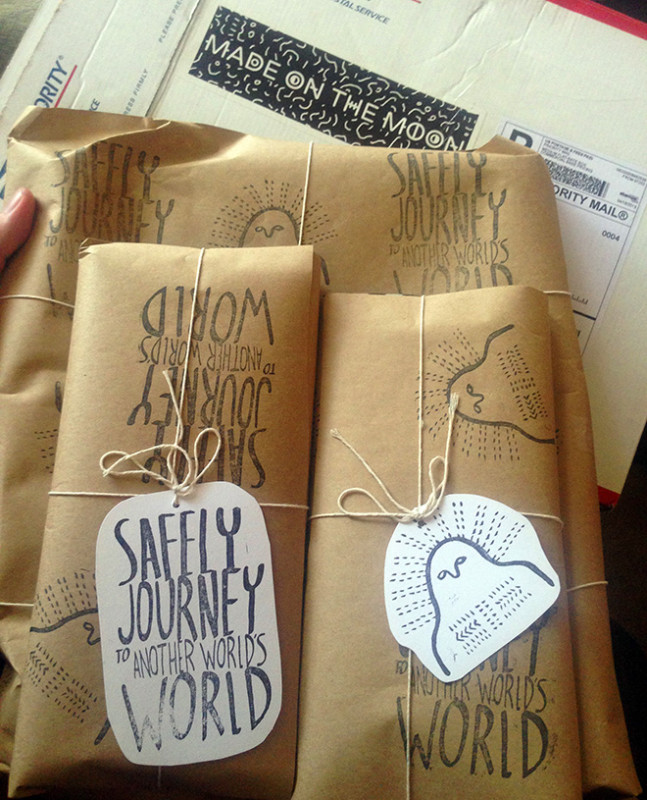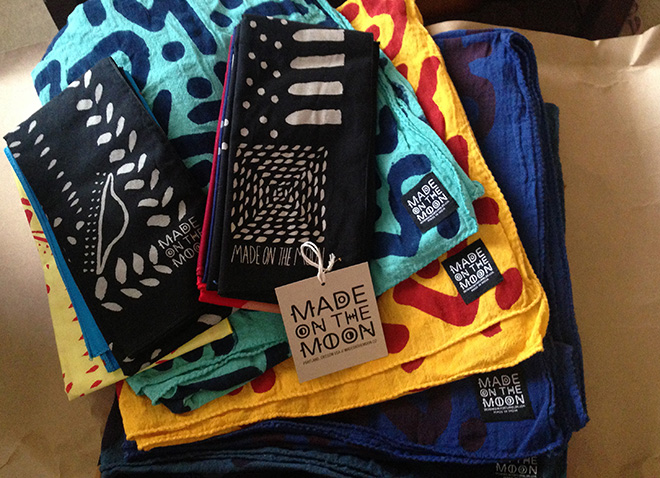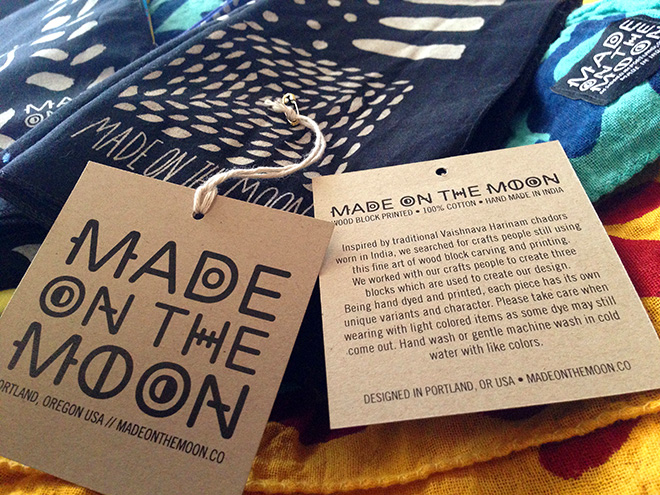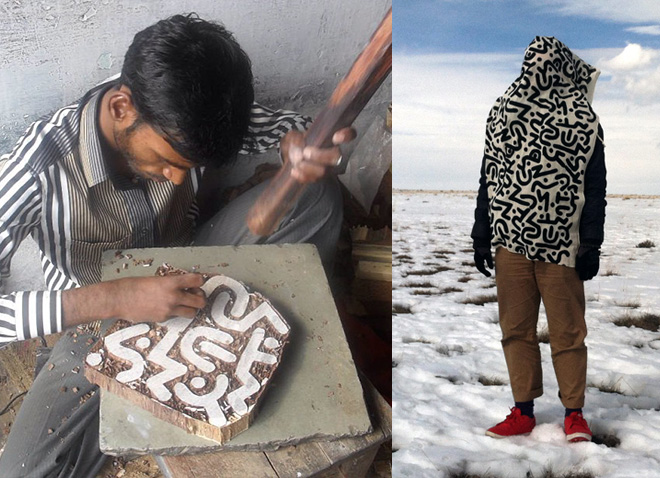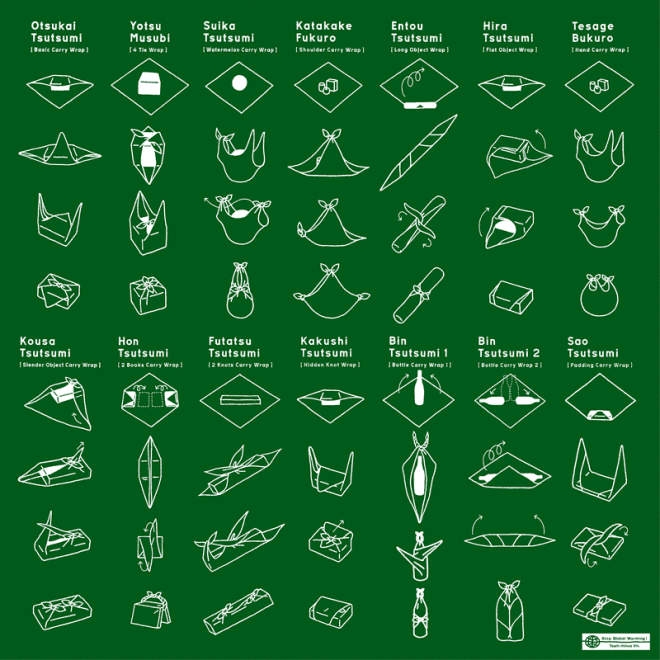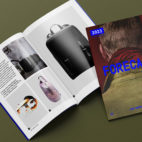Furoshiki: hands-on with Made on the Moon
At Carryology, we love furoshiki. The extremely minimal method of carry, using a single piece of fabric. It shouldn’t be a surprise that this pure, simple method was introduced by the Japanese culture. In a world of zippers, buckles, stitch-lines, floating waterproof liners, titanium suspensions, and airmesh…sometimes, it is really nice to go back to the very essence of “carry”. Almost the definition of the word. Last year, we did a bit of an introduction on this ancient art form. Now, we thought it would be fun to dive in just a bit deeper, something we’re known to do.
Let’s start with the history of furoshiki. The word itself is technically a noun, which describes a traditional Japanese wrapping cloth. It can casually be used as a verb, meaning the process or act of wrapping one of these cloths to make it into a carry device. It is possible that the use and practice of furoshiki dates back all the way to the Nara period (710-794 AD), where it was a custom to hold valuables for the Emperors. The name “furoshiki” itself comes from the Edo period (1603-1868), translating directly to “bath spread” (“furo” and “shiki” meaning “bath” and “to spread” respectively). At the sent? (public bath houses) in these times, it became very popular for individuals to wrap their clothing in a small towel while they bathed or relaxed. Its secondary purpose was for people to stand on when they changed. Each individual’s towel would be very unique (via colorful traditional Japanese patterns/designs, sometimes reflecting the design of their specific family or clan). Because of this, the owner could easily identify their belongings among the dozens of other bundles once they were ready for them. This daily public practice is what is believed to have made furoshiki really catch on among the public, trickling into many other areas of Japanese life.
Merchants would use decorated cloths to transport their goods and people began to wrap gifts in a similar fashion. In fact, the Japanese have a long standing tradition of wrapping presents. It is considered rude to present someone with a gift that is not wrapped. This cultural belief/practice also helped to strengthen the use of furoshiki in daily life. One of the best parts about furoshiki is that they can be wrapped and carried in many different ways and the sizes can range from very large to very small (depending on the requirement or user preference). Generally speaking, most are made from 100% cotton, and the most common sizes are 17″ and 26.7-28.3″ (both in a square shape, though rectangular isn’t completely uncommon). However, the use of furoshiki in Japan declined after World War II, likely because of the widespread popularity of the plastic bag, but they appear to have begun a small comeback in recent years due to increased environmental concerns. In fact, at the 3R Initiative in Tokyo in 2006, the Japanese Minister of the Environment, Yuriko Koike, revealed her own “mottainai furoshiki” (“mottainai” translating to “shameful to waste without having used its potential in full”) to reduce waste via the promotion of furoshiki use in modern times. We like the sound of that. It is not uncommon to see individuals in larger cities using furoshiki to carry their belongings, and it is even more popular in the smaller rural towns/villages.
So to learn a bit more about furoshiki, we began the hunt for a furoshiki cloth to experiment with. Though there are countless options out there, we discovered a brand called Made on the Moon, based out of Portland, OR. They seemed to hit all the requirements (100% cotton, colorful/pattern/decorated, hand-discharge-printed in the USA, and 27″x27″). Remember, it doesn’t have to be Japanese to be a furoshiki, so we didn’t necessarily limit ourselves to Japanese fabric only. Plus, frankly, this brand seemed like a lot of fun. A quick email exchange, and they were on-board with the idea of a Carryology furoshiki experiment.
Though they sell these beautiful fabric squares to be used as bandanas (I always keep a bandana in my back pocket, daily…FWIW), they admitted they were just recently looking into new, fun, unique and interesting ways to utilize these bandanas. Not to mention, one of the two founders is Japanese (the other is German), and was quite familiar with this practice of furoshiki. The timing seemed to align perfectly. A couple of days later, a package full of awesomeness arrived. The packaging, excuse the pun, was out of this world. Serious attention to detail.
It was filled with about 7 bandanas of different colors and designs (one being their “Giza-Orion Correlation” print, based off of the pyramids and Orion constellation connection and another being their “Alien Gathering” print, with alien faces arranged in a circular pattern). This goes perfectly with their unconventional branding: “We create products with the mindset of making art while exploring the universe around us all. We are inspired by the avant-garde, ancient cultures, pop culture, science fiction, space, the unexplained, the unconventional, great dreamers and thinkers alike. Made on the Moon is art for your life.” Cool stuff, we’re into it.
In the package, I also discovered that they tossed in several of their scarves (inspired by traditional Vaishnava Harinam chadors worn in India), in a few different colors. They found a group of artisans in India to create three hand-carved wood blocks which are used to create the hand-printed designs on these scarves. Executed beautifully. They told me to have fun wrapping stuff up and see what I could do with them. Though I wasn’t exactly sure if I’d be able to succeed in furoshiki methods with these long rectangular fabric bolts of the scarves, I gladly would give it a shot. However, I knew for sure that I would be able to achieve something fun with the bandanas.
Before diving in and beginning the experiment, I had to familiarize myself with the various furoshiki folding techniques that were out there. Naturally, I found myself on furoshiki.com/techniques/. There are plenty of other resources out there to learn these techniques which you can discover via a quick Google search, this is the one I went with. You may love this one, or love a different one. We even posted a great infographic up the last time we discussed furoshiki. It’s all totally up to you. Keep in mind, almost any fabric will work. We obviously have a taste for the unique, fun and interesting, which is why we reached out to Made on the Moon, (thanks, guys!).
The most important thing is to research the different methods for folding/tying different shapes/weights/sizes of objects in their different carry methods/formats that are best suited for the specific application that is presented at that moment. And then to remember them all. For example, different methods would be used to carry one honeydew melon than 1,000 kidney beans. It is important to understand that your brain now becomes your backpack, and your messenger bag, and your tote, and more. The fabric is just fabric, a vehicle for the carry. Wrap your mind around that (check out that pun). Such a great way to look at carry. Almost a philosophy in itself.





 Carry Awards
Carry Awards Insights
Insights Liking
Liking Projects
Projects Interviews
Interviews
